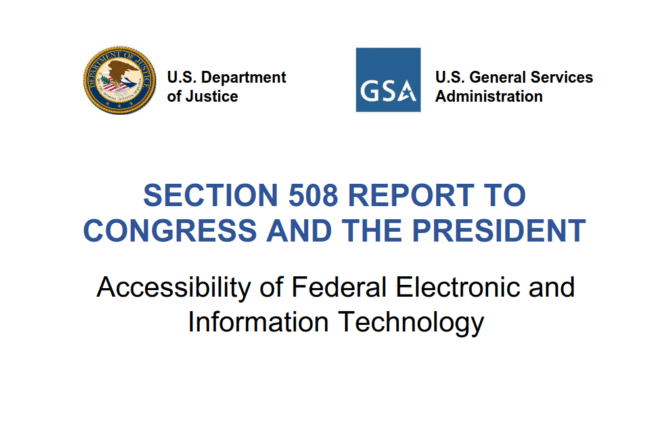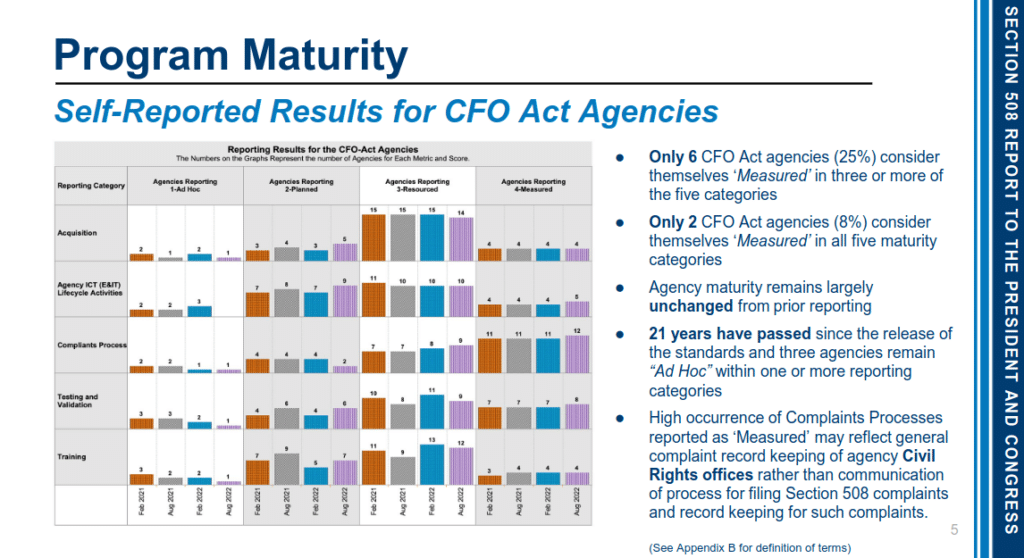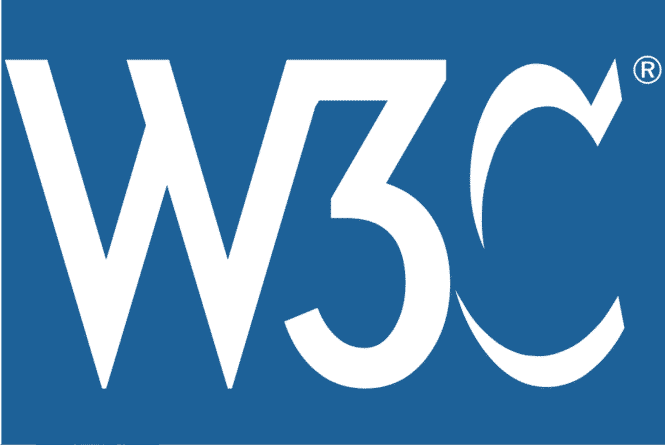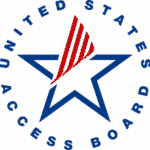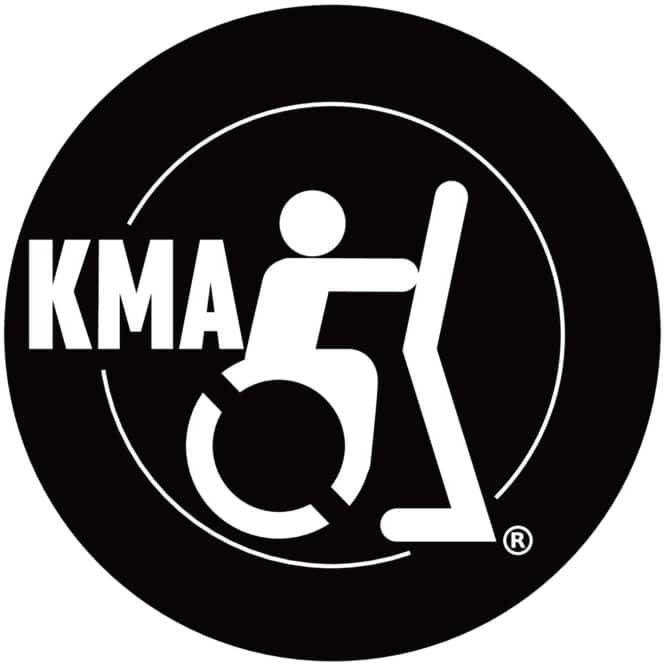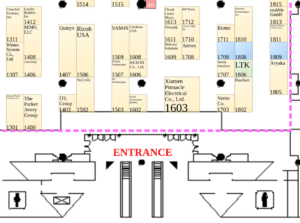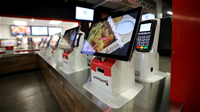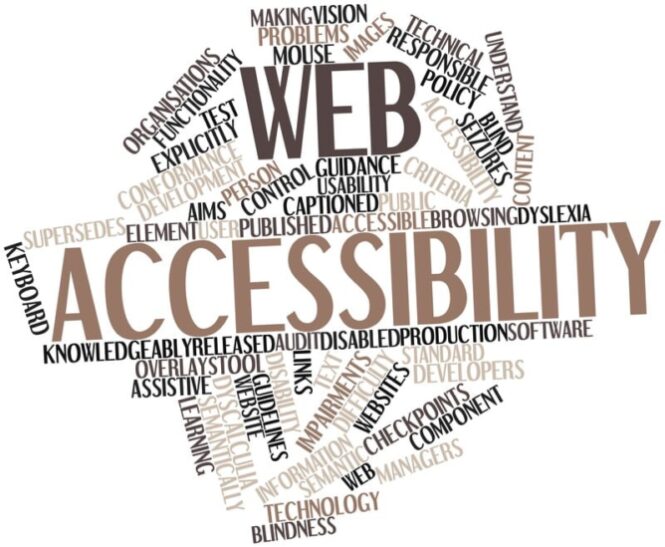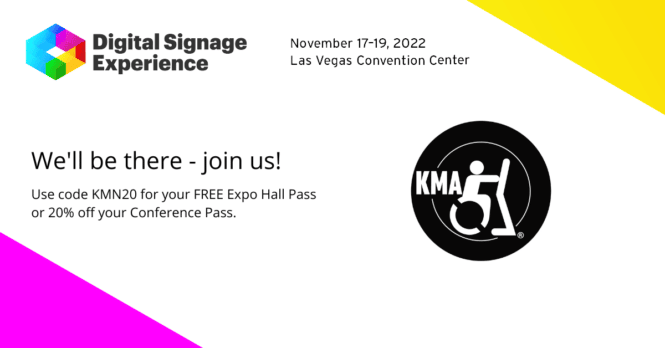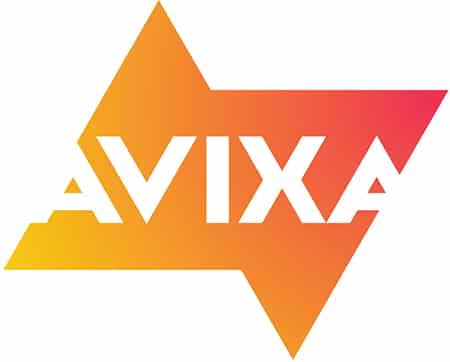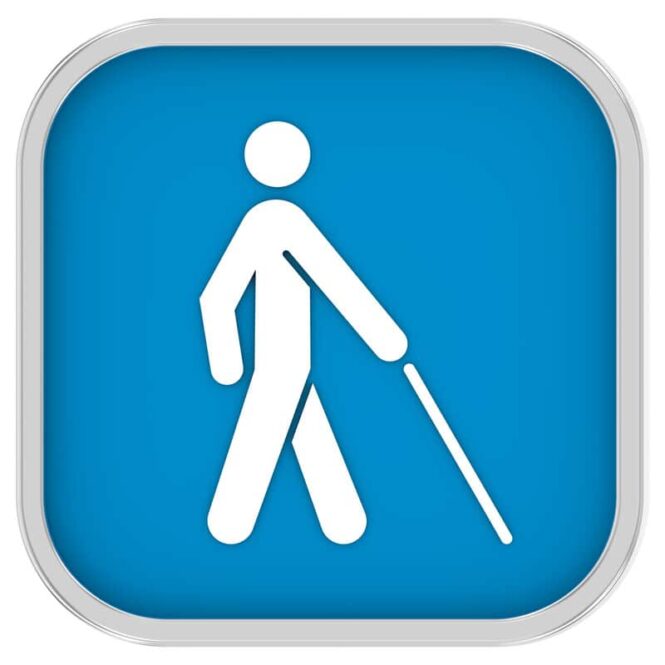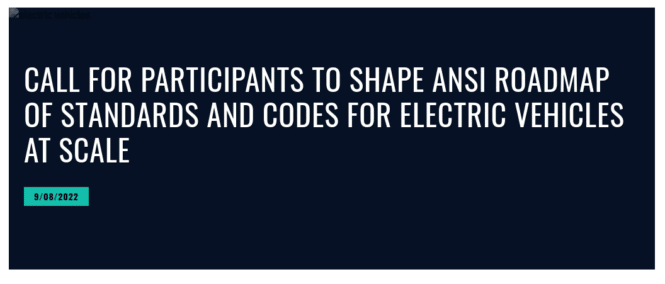AGENCY:
Architectural and Transportation Barriers Compliance Board.
ACTION:
Advance Notice of Proposed Rulemaking.
SUMMARY:
The Architectural and Transportation Barriers Compliance Board (“Access Board” or “Board”) is issuing this Advance Notice of Proposed Rulemaking (ANPRM) to begin the process of supplementing its accessibility guidelines for buildings and facilities covered by the Americans with Disabilities Act of 1990 and the Architectural Barriers Act of 1968 to address access to various types of self-service transaction machines (SSTMs), including electronic self-service kiosks, for persons with disabilities. By this ANPRM, the Access Board invites public comment on the planned approach to supplementing its ADA Accessibility Guidelines and ABA Accessibility Guidelines with new scoping and technical provisions for SSTMs and self-service kiosks. The Board will consider comments received in response to this ANPRM in its development of these guidelines for SSTMs and self-service kiosks in future rulemaking.
DATES:
Submit comments by November 21, 2022.
ADDRESSES:
You may submit comments, identified by docket number (ATBCB-2022-0004), by any of the following methods:
• Federal eRulemaking Portal: https://regulations.gov. Follow the instructions for submitting comments.
• Email:[email protected]. Include docket number ATBCB-2022-0004 in the subject line of the message.
• Mail: Office of Technical and Information Services, U.S. Access Board, 1331 F Street NW, Suite 1000, Washington, DC 20004-1111.
Instructions: All submissions must include the docket number (ATBCB-2022-0004) for this regulatory action. All comments received will be posted without change to https://www.regulations.gov, including any personal information provided.
Docket: For access to the docket, to read background documents or public comments received, go to: https://www.regulations.gov/docket/ATBCB-2022-0004.
FOR FURTHER INFORMATION CONTACT:
Technical information: Bruce Bailey, (202) 272-0024, [email protected]. Legal information: Wendy Marshall, (202) 272-0043, [email protected].
SUPPLEMENTARY INFORMATION:
I. Legal Authority
The Americans with Disabilities Act (ADA) of 1990 charges the Access Board with developing and maintaining minimum guidelines to ensure the accessibility and usability of the built environment in new construction, alterations, and additions. See42 U.S.C. 12101 et seq.; see also29 U.S.C. 792(b)(3)(B) & (b)(10). The Access Board’s ADA Accessibility Guidelines (ADAAG) address buildings and facilities covered under Title II of the ADA (state and local government facilities) and Title III of the ADA (places of public accommodation and commercial facilities). The ADAAG serves as the basis for legally enforceable accessibility standards issued by the Department of Justice (DOJ) and the Department of Transportation (DOT), which are the federal entities responsible for implementing and enforcing the ADA’s non-discrimination provisions related to buildings and facilities in new construction, alterations, and additions.
The Access Board has a similar responsibility under the Architectural Barriers Act (ABA) of 1968, which requires that buildings and facilities designed, built, or altered with certain federal funds or leased by federal agencies be accessible to people with disabilities. See42 U.S.C. 4151 et seq. The ABA charges the Access Board with developing and maintaining minimum guidelines for covered buildings and facilities. The Board’s ABA Accessibility Guidelines (ABAAG) serve as the basis for enforceable standards issued by four standard-setting agencies: the Department of Defense, the General Services Administration, the Department of Housing and Urban Development, and the U.S. Postal Service.
II. Need for Accessibility Guidelines for SSTMs
Kiosks and other types of SSTMs are now a common feature in places of public accommodation, government offices, and other facilities. They allow users to conduct an expanding range of transactions and functions independently. SSTMs serve as point-of-sales machines for self-checkout in a growing number of retail facilities, grocery stores, and drug stores. Self-service kiosks at airports and hotels provide check-in services. Restaurants are providing touchscreens for customers to place orders, and health care providers, including doctors’ offices and hospitals, allow patients to check in at kiosks. SSTMs and self-service kiosks are also found at state and local government facilities, such as motor vehicle departments.
SSTMs and self-service kiosks have long posed accessibility barriers to people with disabilities, particularly those who are blind or have low vision. Robust speech output is necessary to provide access for users unable to see display screens. It is increasingly common for information and communication technology (ICT), including kiosks, to have touchscreens without a physical keypad or other tactile controls. This results in the screen being an obstacle for the user to both receive information, if the information is not provided audibly, and to enter information, as the input “buttons” are the flat touchscreen which have no tactile markers. In addition, SSTMs and self-service kiosks frequently pose barriers for users who are deaf or hard of hearing by failing to provide captioning and text equivalents for audible information.
These devices also must be accessible to people with physical impairments, including those who use wheelchairs and other mobility devices, have limited dexterity, or who are of short stature. Sufficient clear floor space at the device is necessary to accommodate wheeled mobility aids. For usability, controls and keys must be within accessible reach ranges and screens or other displays must be viewable from a seated position. Controls and features must not require delicate motor movements or fine dexterity.
On May 19, 2021, the Access Board conducted a virtual public forum on the accessibility of SSTMs that featured panel presentations by invited speakers. One panel addressed usability issues and barriers that people with sensory, cognitive, physical, or multiple disabilities encounter using kiosks, point-of-sales machines, and other SSTMs. Speakers included representatives from the Blinded Veterans Association, the Coleman Institute for Cognitive Disabilities, the Deaf and Hard of Hearing Consumer Advocacy Network, and the United Spinal Association. They called attention to common access barriers, such as the lack of speech output and tactilely discernable input keys and controls for users who are blind or who have low vision. People who use wheelchairs and scooters encounter display screens that are difficult to see and controls that are out of reach. Further, correction and time-out features can impact usability for persons with cognitive disabilities. ( See “Panel Discussions on Inclusive Interfaces: Accessibility to Self-Service Transaction Machines” available at: https://www.access-board.gov/news/2021/05/24/u-s-access-board-conducts-panel-discussions-on-self-service-transaction-machines.)
A second panel discussed efforts by research and industry to improve access to SSTMs. Panelists included representatives from the Kiosk Manufacturer Association (KMA) and the Trace Research and Development Center who addressed the need for accessibility standards for SSTMs, provided an overview of relevant requirements and resources, and discussed strategies for accessibility. They were joined by representatives from software and hardware developer NCR, which has created a Universal Navigator interface for SSTMs, and Vispero, a company that has created a kiosk interface that integrates screen-reading software. Id.
According to the KMA, the lack of accessibility to kiosks is due in large part to the absence of complete and uniform standards. The lack of detailed requirements has led to a common misconception that physical accessibility or an audio jack alone is sufficient. In addition, some states have implemented their own unique requirements for SSTMs, which led to complications in ensuring compliance with varying standards. Some kiosk manufacturers serve global markets, and they have stressed the importance of consistency of U.S. standards with requirements issued by other countries and international organizations. Id.
III. Existing Guidelines
A. The ADA and ABA Accessibility Guidelines
The Access Board has issued accessibility guidelines for the built environment. The Access Board’s ADA and ABA Accessibility Guidelines, which were jointly updated in 2004, require only ATMs and fare machines to provide speech output so that displayed information is communicated to users who are blind or who have low vision. The guidelines also address braille instructions, privacy, input controls, display screens, operable parts, and clear floor space. See36 CFR part 1191, 69 FR 44084.
When the Board promulgated the ADA and ABA Accessibility Guidelines in 2004, it noted in the preamble that it had chosen not to broaden the application of the guidelines to address other types of SSTMs such as point-of-sale machines and information kiosks. However, the Board noted that it intended to consider a future update to these guidelines after monitoring the application of accessibility standards it had issued under Section 508 of the Rehabilitation Act (36 CFR part 1194) in 2000 for information and communication technology (ICT), including electronic kiosks, in the federal sector. See69 FR 44083, 44455 (July 23, 2004).
In March of 2010, the Board issued an Advanced Notice of Proposed Rulemaking (ANPRM) indicating that it was considering a supplemental rulemaking to address in ADAAG access to SSTMs used for ticketing, check-in or check-out, seat selection, boarding passes, or ordering food in restaurants and cafeterias. See Americans with Disabilities Act (ADA) Accessibility Guidelines for Buildings and Facilities; Telecommunications Act Accessibility Guidelines; Electronic and Information Technology Standards, ANPRM, 75 FR 13457 (Mar. 22, 2010). However, the Board later postponed this effort due to rulemaking it was conducting on information and communication technology in the federal sector under the Rehabilitation Act. See Electronic and Information Technology Accessibility Standards, ANPRM, 76 FR 76640 (Dec. 8, 2011).
B. Section 508 Accessibility Standards
Section 508 of the Rehabilitation Act of 1973, as amended, 29 U.S.C. 794d (hereafter, “Section 508”) requires access to ICT in the Federal sector. The law applies to ICT developed, procured, maintained, or used by federal agencies, including SSTMs and self-service kiosks, as well as computers, telecommunications equipment, software, websites, and electronic documents. The Board is responsible for issuing accessibility standards for ICT covered by Section 508. The Board published its original Section 508 Standards in 2000 (65 FR 80499) and updated them with the Revised 508 Standards in January 2017 (82 FR 5790). The Federal Acquisition Regulatory Council and federal agencies incorporate these standards into their respective acquisition regulations and procurement policies and directives. See86 FR 44229 (Aug. 11, 2021).
The Revised 508 Standards apply to hardware in the federal sector that transmits information or has a user interface, such as self-service kiosks provided by federal agencies for use by customers in post offices and social security field offices. See36 CFR part 1194, App. A, E206. The Section 508 Standards address biometrics, privacy, operable parts, data connections, display screens, status indicators, color coding, audible signals, two-way voice communication, closed captioning, and audio description. Id. at App. C, Ch. 4.
C. DOT Regulations for Self-Service Kiosks in Airports
In 2013 the Department of Transportation (DOT) supplemented its regulations under the Air Carrier Access Act (ACAA) of 1986, as amended, and the Rehabilitation Act to address access to airport self-service kiosks used for checking in, printing boarding passes, and other passenger services. 78 FR 67882 (Nov. 12, 2013). DOT’s rule applies requirements based on the provisions for ATMs and fare machines in the ADA Standards and provisions for self-contained closed products in the Board’s Original Section 508 Standards. Id. New airport kiosks must meet the DOT standards until at least a quarter of all kiosks at each airport location are accessible. The rule applies to U.S. and foreign air carriers that own, lease, or control automated airport kiosks at U.S. airports with at least 10,000 enplanements a year. Id.
III. Planned Approach to the NPRM and Questions for Public Comment
The Access Board intends to propose supplementary provisions for SSTMs and self-service kiosks in a future rulemaking that are based on both the technical requirements for ATMs and fare machines in the ADA and ABA Accessibility Guidelines (36 CFR part 1191) as well as relevant provisions for hardware in the Revised Section 508 Standards (36 CFR part 1194). In addition, the Board intends to address the types of SSTMs and self-service kiosks to be covered under both the ADA and the ABA and the number or percentage required to comply. The Board invites public comment on this planned approach for this rulemaking generally, and on the specific questions posed below.
Application
The Access Board’s authority under the ADA and ABA to set minimum guidelines for buildings and facilities is limited to those elements that are built-in or that are fixed to buildings and sites. DOJ and other agencies have the authority to regulate moveable furniture and equipment under the ADA or ABA. Thus, the Board’s ADA and ABA Accessibility Guidelines apply only to ATMs and fare machines that are fixed or built-in, but not to those that are moveable. Similarly, the Board intends that only SSTMs and self-service kiosks that are fixed or built-in will be covered by this supplementary rule.
SSTMs and self-service kiosks are now commonplace in many different types of businesses and establishments and are used to conduct a growing range of transactions and services. One of the most common types of SSTMs that people encounter on a routine basis is self-checkout kiosks in grocery stores, drug stores, and retail chains. SSTMs and self-service kiosks are also being provided in settings where only information is being exchanged, such as unattended checking in for an appointment, checking out of a hotel, or ordering food in a restaurant. Touchscreens and tablets are now being incorporated into many different types of SSTMs and self-service kiosks. For example, some SSTMs and self-service kiosks use touchscreen interfaces for the delivery of goods and services, such as pairing online ordering with pickup from an automated electronic locker at a local retail location. The customer does not interact directly with any employees of the retail store.
Additionally, many vending machines are now essentially SSTMs, offering a wide array of choices via a video display, and utilizing touch-screen input to navigate those choices. The current ADA and ABA Accessibility Guidelines address physical access to vending machines by requiring at least one of each type to comply with criteria for operable parts, but the guidelines do not address access for users who are blind or who have low vision. 36 CFR part 1191, App. D, 228 and 309.
Question 1. In this rulemaking, the Board intends to cover fixed or built-in electronic devices that are designed for unattended operation by customers ( i.e., “self-service”) to conduct a transaction. It also intends to address fixed or built-in self-service kiosks, including those used to check in, place an order, obtain a product, or retrieve information. Are there capabilities, functions, or other objective criteria that should define the types of devices covered as SSTMs or self-service kiosks?
Question 2. Are there other types of electronic devices providing unattended interaction that should be addressed by this rulemaking? If so, what are they?
Question 3. Are there types of self-service electronic devices that should not be covered by this rulemaking? If so, why not?
Minimum Number
In its rulemaking, the Board intends to address the minimum number of SSTMs and self-service kiosks required to be accessible. Currently, the ADA and ABA Accessibility Guidelines require at least one of each type of ATM or fare machine provided at each location to comply. See 36 CFR part 1191, App. B 220 and App. C F220. This may be insufficient in high traffic locations where many SSTMs or self-service kiosks of the same type are provided such as self-checkout devices in grocery stores and big-box retailers. Further, it can be difficult for users who are blind or who have low vision to locate which self-service devices are accessible, especially in areas where many devices are provided. DOT’s airport kiosk rule requires compliance for all new kiosks until at least 25% of all kiosks at each airport location are accessible. The 508 Standards require that all SSTMs and self-service kiosks be accessible.
Question 4. Should the Board’s rule require all fixed or built-in SSTMs and self-service kiosks in each location to be accessible? If not, why, and what should the number be? Are there some facilities or locations that should have a higher number of accessible devices than others?
Technical Requirements
ADA and ABA Accessibility Guidelines
The Board intends to apply the technical requirements from the ADA and ABA Accessibility Guidelines for ATMs and fare machines to SSTMs and self-service kiosks. Currently, these Guidelines address clear floor or ground space, operable parts, speech output, input controls, and display screens.
Clear floor or ground space is required so that people with disabilities, including those who use wheeled mobility aids, can approach and position at ATMs or fare machines in a forward or parallel direction. 36 CFR part 1191, App. D 707.2 and 305.5. This clear space generally must be at least 30 inches wide and at least 48 inches deep. Id. at 305.3. Additional space is required for maneuvering where this clear space is obstructed on both sides for more than half the depth. Id. at 305.7.
Operable parts for ATMs and fare machines must be located within accessible reach ranges. Id. at 707.3, 309.3, 308. They must be usable with one hand, and not require tight grasping, pinching, or twisting of the wrist, or more than 5 pounds force to operate. Id. at 707.3, 309.4. Users must be able to differentiate each operable part by sound or touch without activation; touch activation is permitted if a key to clear or correct input is provided. Id. at 707.3.
ATMs and fare machines must provide speech output (recorded or digitized human or synthesized) through a mechanism that is readily available to all users, such as an industry standard connector or telephone handset. Id. at 707.5. The speech function must have volume control and allow users to repeat or interrupt output. Braille instructions for initiating the speech are required Id. at 707.8. ATM speech output must provide an equal degree of privacy. Id. at 707.4.
Additionally, ATM and fare machines must provide tactilely discernible input controls for each function. Id. at 707.6. Numeric keys must be arranged in a 12-key ascending or descending telephone keypad layout, and the number five key shall be tactilely distinct from the other keys. Key surfaces not on active areas of display screens must be raised above surrounding surfaces. Where membrane keys are the only method of input, each shall be tactilely discernable from surrounding surfaces and adjacent keys. Visual contrast (either light-on-dark or dark-on-light) is required between function keys and background surfaces and between function key characters and symbols and key surfaces. Tactile symbols are required for certain function keys including enter or proceed, clear or correct, cancel, add value, and decrease value. Id.
The Guidelines also require that display screens be visible from a point located 40 inches above the center of the clear floor space in front of the machine. Id at 707.7. Display screen characters must have a cap height of at least 3/16 inch, be in a sans serif font, and contrast from the background either light-on-dark or dark-on-light.
Section 508 Standards
The Board is also considering incorporating into the proposed rule certain requirements in the Revised 508 Standards for hardware that transmits information or has a user interface. 36 CFR part 1194, App. C, Ch. 4. In particular, the Board is considering including those requirements that specifically pertain to hardware that by its design does not support a user’s assistive technology other than personal headsets or other audio couplers. Such hardware is referred to as having “closed functionality.” The Revised 508 Standards require hardware with closed functionality to provide speech output for all information displayed on-screen or needed to verify transactions. Id. at 402. Like the requirements in the ADA and ABA Accessibility Guidelines, speech output must be delivered through a mechanism readily available to all users, such as an industry standard headphone jack or telephone handset, and the interface must allow users to repeat or pause output. Other specifications in this section of the 508 Standards which are harmonized with those in the ADA and ABA Guidelines address braille instructions for activating speech and volume control, privacy, operable parts, including input controls, and the visibility of display screens. Id. at 402.2.5, 402.3, 405, 407, and 408. Display screen characters must have a cap height of at least 3/16 inch unless there is a screen enlargement feature, be in a sans serif font, and contrast from the background either light-on-dark or dark-on-light. Id. at 402.4.
The Revised 508 Standards, which are much more recent than the ADA and ABA Accessibility Guidelines, contain additional specifications including provisions that address biometrics, use of color and non-speech audio to convey information, status indicators, and captioning. Id. at 403, 409, 410, 411, and 413. The Revised 508 Standards also provide specifications for volume control for private listening ( e.g., through a headphone jack) and non-private audio ( i.e., speakers) and require tickets and farecards used with kiosks to have an orientation that is tactilely discernable if a particular orientation is needed for use. Id. at 402.3 and 407. Other unique provisions in the Revised 508 Standards address the display screen not blanking automatically when the speech-output mode is activated, alphabetic keys, timed responses, and flashing elements that can trigger photosensitive seizures. Id. at (405.1, 407.3.2, 407.5, and 408.3.
The Board intends to propose provisions for SSTMs and self-service kiosks based on those for ATMs and fare machines in the ADA and ABA Accessibility Guidelines and additional criteria relevant to SSTMs and self-service kiosks from the Revised 508 Standards. This approach is similar to that taken by DOT in its rule on airport self-service kiosks.
The Board has prepared a side-by-side comparison of these requirements in the ADA and ABA Guidelines, the Revised 508 Standards, and the DOT rule on airport kiosks. This matrix is available in the rulemaking docket at www.regulations.gov/docket/ATBCB-2022-0004.
Question 5. The Board seeks comment on this planned approach for the proposed supplementary guidelines for SSTMs and self-service kiosks outlined in this ANPRM.
The Revised 508 Standards contain requirements not included in the ADA and ABA Accessibility Guidelines that may pertain to ATMs or fare machines. These include a provision that biometrics, where provided, not be the only means of user identification or control. They also require that tickets, fare cards, or keycards, where provided, have an orientation that is tactilely discernible when necessary for use.
Question 6. Should requirements for ATMs and fare machines in the current ADA and ABA Accessibility Guidelines be updated as part of this rulemaking to address additional features covered in the Revised 508 Standards and the DOT rule pertaining to the accessibility of ATMs and fare machines?
Question 7. The Board seeks comments from users and manufacturers of self-service transaction machines and self-service kiosks on their experiences in using or designing accessible machines and the benefits and costs associated with the proposed requirements.
Question 8. The Board seeks comments on the numbers of small entities that may be affected by this rulemaking and the potential economic impact to these entities; these include small businesses, small non-profits, and governmental entities with a population of fewer than 50,000. The Board also seeks feedback on any regulatory alternatives that may minimize significant economic impacts on small entities.
Question 9. Should SSTM and a self-service kiosk which accept credit and debit cards be required to accept contactless payment systems?
Approved by notational vote of the Access Board on June 10, 2022.
Christopher Kuczynski,
General Counsel.
